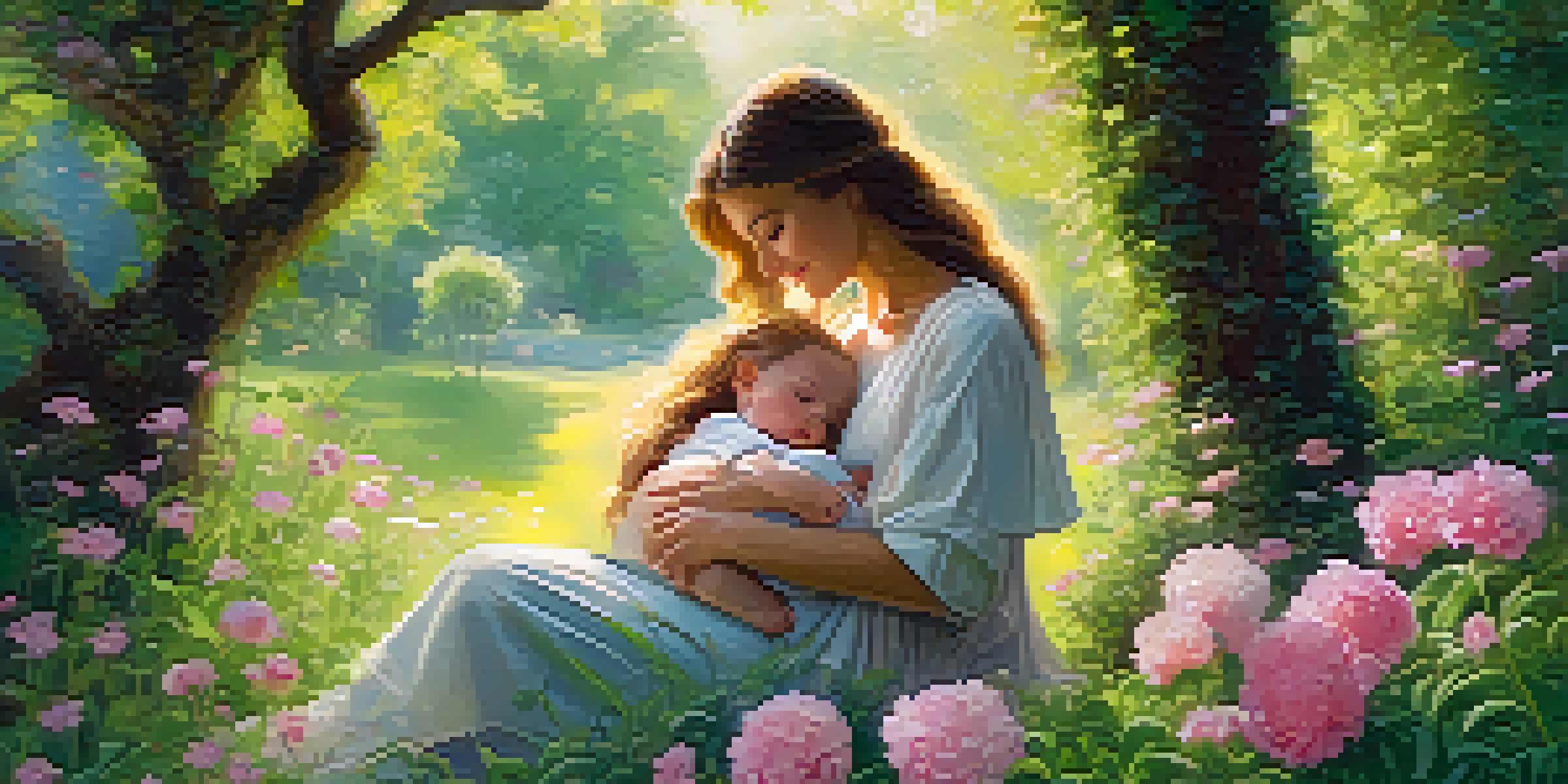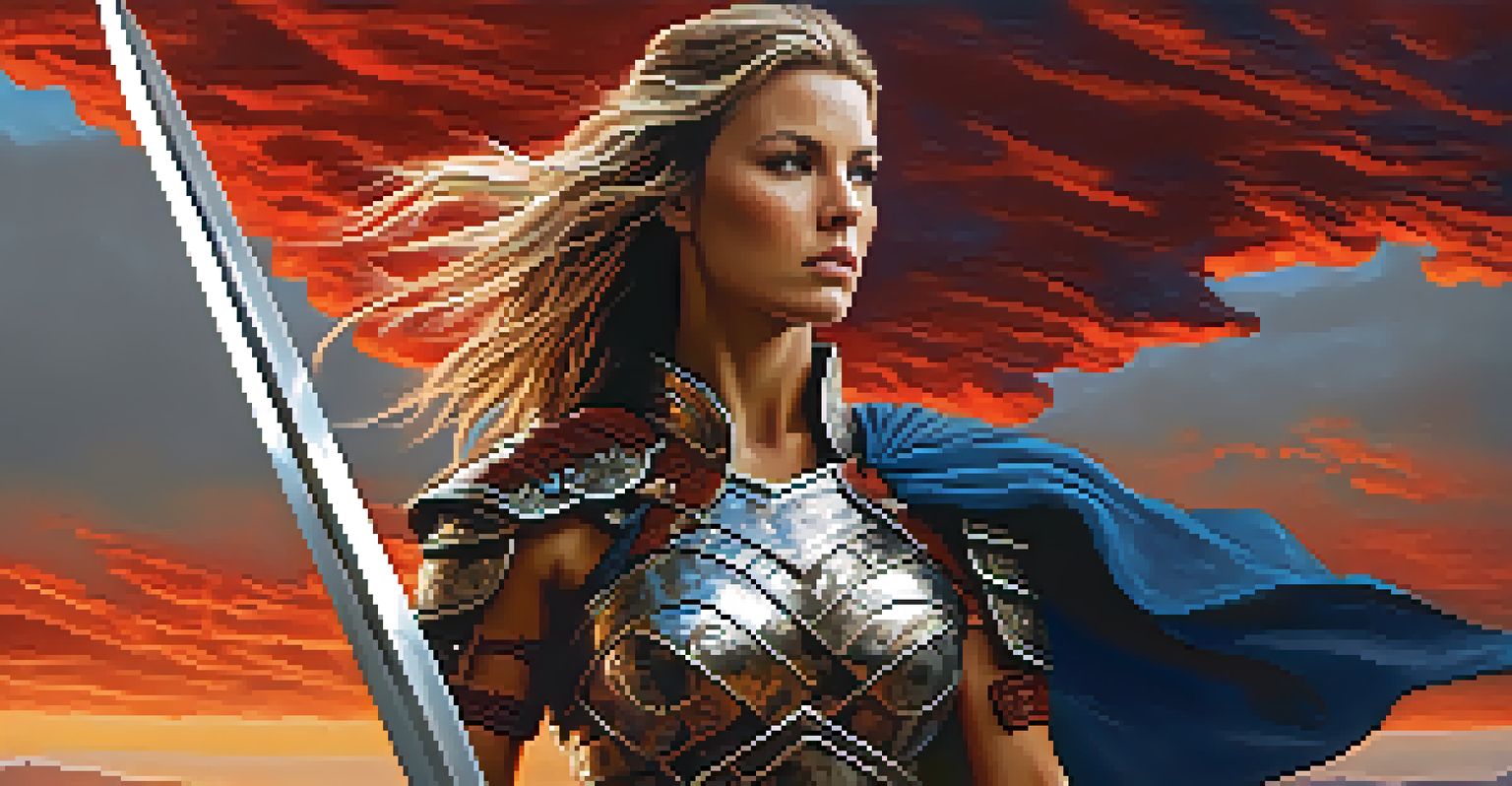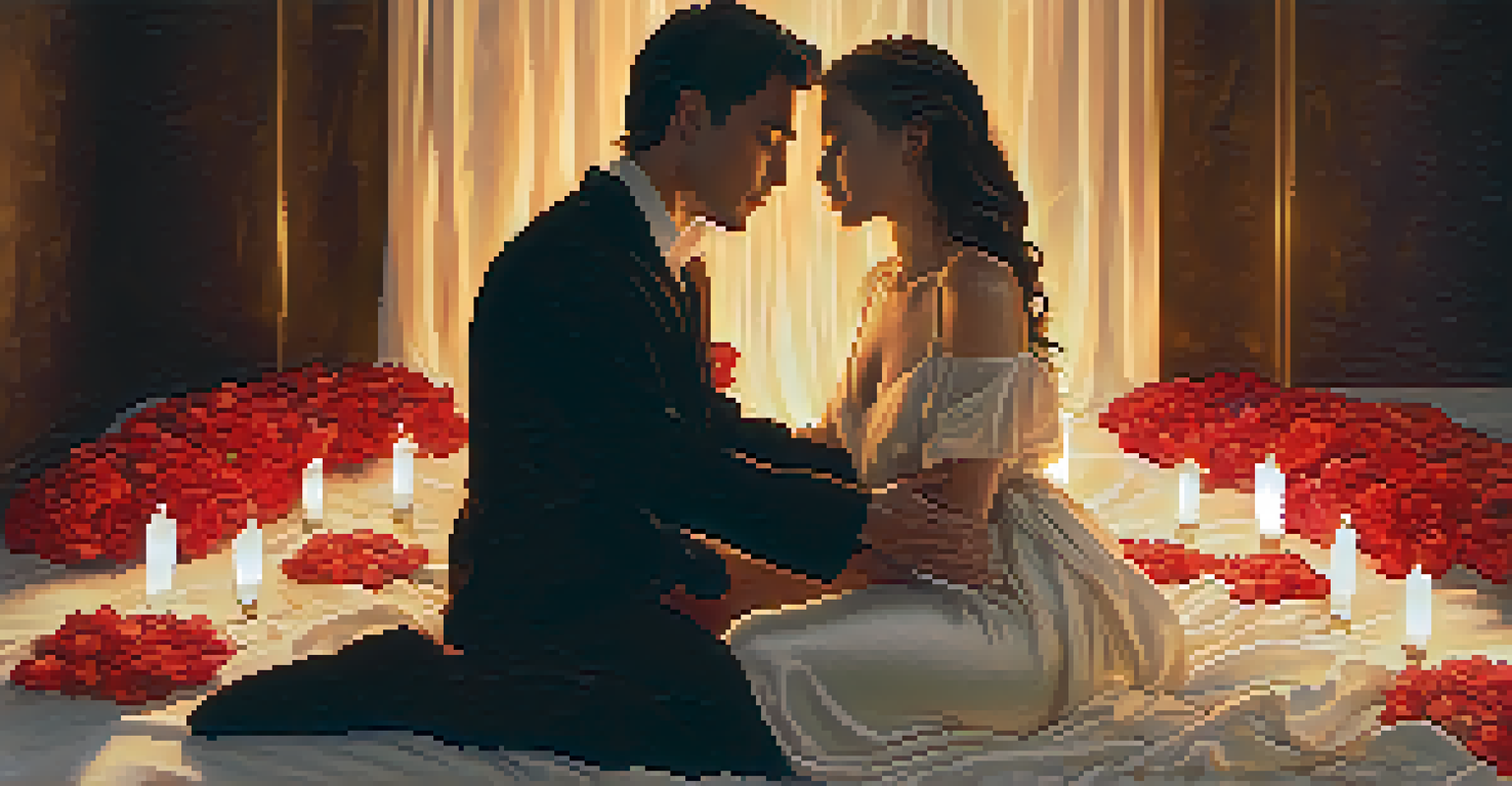Feminine Archetypes: Women in Mythology and Artistic Themes

Understanding Feminine Archetypes in Mythology
Feminine archetypes represent universal patterns and characteristics often seen in myths. These figures, such as the nurturing mother or the fierce warrior, embody qualities that resonate across cultures and eras. By studying these archetypes, we gain insight into societal views of women and femininity throughout history.
The most common way people give up their power is by thinking they don't have any.
For instance, the goddess Athena from Greek mythology symbolizes wisdom and strategic warfare, showcasing a balance of intellect and strength. In contrast, figures like Demeter highlight the nurturing and life-giving aspects of femininity, representing fertility and motherhood. These diverse representations help us appreciate the multifaceted nature of women's roles and identities.
By examining these archetypes, we not only celebrate women's diverse capabilities but also challenge stereotypes that have persisted for generations. The stories told through these figures encourage deeper discussions about gender roles and the powerful impact of women in both myth and reality.
The Mother Archetype: Nurturing and Protective
The Mother archetype is one of the most recognized feminine symbols, often associated with nurturing and unconditional love. This archetype manifests in various cultural myths, such as the Virgin Mary in Christianity or Gaia, the Earth Mother in Greek mythology. Both figures underscore the importance of compassion, care, and the protective nature inherent in motherhood.

This archetype not only represents biological motherhood but also the idea of nurturing in broader contexts, like community and creativity. For example, Mother Nature embodies the life-giving force of the earth, reminding us of our connection to the planet and its resources. This nurturing aspect encourages us to care for each other and our environment.
Feminine Archetypes Shape Identity
Feminine archetypes from mythology provide insights into societal views of women, highlighting diverse roles and identities throughout history.
As we explore the Mother archetype in art, we see how artists have depicted this nurturing quality through various mediums, from paintings to sculptures. These representations evoke feelings of warmth and safety, inviting viewers to reflect on their own maternal relationships and the importance of nurturing in all its forms.
The Warrior Archetype: Strength and Independence
In contrast to the nurturing Mother, the Warrior archetype embodies strength, courage, and independence. Figures such as the Norse goddess Freyja or the African warrior queen Yaa Asantewaa illustrate women who take charge and fight for their beliefs. These archetypes serve as powerful reminders that women can be fierce, resilient, and unapologetically assertive.
Empowerment is not about being strong; it's about being real.
The Warrior archetype challenges traditional gender norms by presenting women as capable leaders and fighters. Their stories inspire others to embrace their strength and pursue their dreams, regardless of societal expectations. This representation encourages women to embody empowerment and assertiveness in various aspects of their lives.
Artistic interpretations of this archetype often feature dynamic poses, fierce expressions, and symbols of strength, such as swords or shields. These visuals not only celebrate women's strength but also inspire a sense of empowerment for viewers, prompting them to reflect on their own inner warrior.
The Lover Archetype: Passion and Sensuality
The Lover archetype represents passion, sensuality, and emotional connection. Figures like Aphrodite from Greek mythology and the Hindu goddess Parvati embody this archetype, highlighting the importance of love and desire in human experience. These figures remind us that femininity can be celebrated through the lens of sexuality and emotional depth.
This archetype encourages women to embrace their desires and express their emotions openly. The Lover archetype is not just about romantic love; it encompasses a broader appreciation for art, beauty, and life itself. It invites individuals to experience the fullness of life, connecting with others in profound ways.
The Mother as Nurturer and Guide
The Mother archetype emphasizes nurturing qualities and the importance of compassion, reflecting a broader context of care within communities.
In art, this archetype is often depicted through intimate moments and expressions of love, from passionate embraces to serene portraits. These representations evoke feelings of longing and connection, prompting viewers to appreciate the beauty found in relationships and the emotions that shape our experiences.
The Sage Archetype: Wisdom and Intuition
The Sage archetype embodies wisdom, intuition, and insight, often represented by figures such as Athena or the wise woman archetype found in various cultures. These characters guide others with their knowledge and understanding, highlighting the value of inner wisdom and experience. The Sage reminds us that femininity is not solely about youth or beauty but also about the strength of character and intellect.
This archetype encourages women to embrace their wisdom and share their insights with the world. In many myths, the Sage often serves as a mentor or guide, helping others navigate challenges and make informed decisions. This role emphasizes the importance of mentorship and the sharing of knowledge across generations.
Artistic depictions of the Sage often include symbols of knowledge, such as books or scrolls, and portrayals that exude calm and stability. These images resonate with those seeking guidance, reinforcing the idea that wisdom is a powerful aspect of femininity that deserves recognition and respect.
The Heroine Archetype: Overcoming Adversity
The Heroine archetype represents resilience, bravery, and the journey of overcoming adversity. This archetype can be seen in figures like Joan of Arc or Mulan, who defied societal expectations and fought for their beliefs. Their stories inspire countless individuals to embrace their inner strength and pursue their goals despite challenges.
The Heroine's journey often involves personal transformation, illustrating how struggles can lead to growth and empowerment. These narratives encourage women to confront obstacles head-on and emerge stronger than before. They remind us that vulnerability can coexist with strength, and that every challenge presents an opportunity for growth.
Modern Culture Embraces Archetypes
Contemporary representations of feminine archetypes inspire discussions about gender roles, empowerment, and inclusivity in society.
In art, the Heroine is frequently depicted in moments of triumph, showcasing her strength and determination. These representations evoke feelings of inspiration and courage, encouraging viewers to reflect on their own journeys and the power of resilience in the face of adversity.
The Crone Archetype: Wisdom of Aging and Transition
The Crone archetype symbolizes the wisdom that comes with aging and life transitions. Often depicted as a wise old woman, figures like Hecate or Baba Yaga represent the depth of knowledge and experience accumulated over a lifetime. This archetype challenges the stereotype of aging women as irrelevant, instead celebrating their contributions to society.
The Crone embodies transformation, guiding others through significant life changes with her insight. She is often seen as a mentor, providing support and wisdom to younger generations. This representation encourages women to embrace the aging process as a valuable phase of life filled with opportunities for growth and self-discovery.

In artistic representations, the Crone is frequently depicted in reflective poses, surrounded by symbols of wisdom, such as owls or books. These visuals highlight the beauty of aging and the importance of honoring the experiences that shape our lives, fostering a deeper appreciation for the knowledge gained through time.
The Impact of Feminine Archetypes on Modern Culture
Feminine archetypes from mythology and art continue to influence modern culture in profound ways. They shape our understanding of gender roles and inspire movements for equality and empowerment. By revisiting these archetypes, we can challenge outdated perceptions and promote a more inclusive representation of women today.
In contemporary literature, film, and art, we see a resurgence of these archetypes, often reimagined to reflect current societal values. Characters embodying aspects of the Mother, Warrior, Lover, and other archetypes resonate with audiences, encouraging conversations about gender and identity. This cultural shift fosters a deeper appreciation for the diverse experiences of women.
As we embrace these archetypes, we create space for discussions around women's empowerment and the need for varied representations. Recognizing the strength and complexity of feminine archetypes allows us to celebrate the many roles women play in society, paving the way for a more inclusive narrative that honors their contributions.